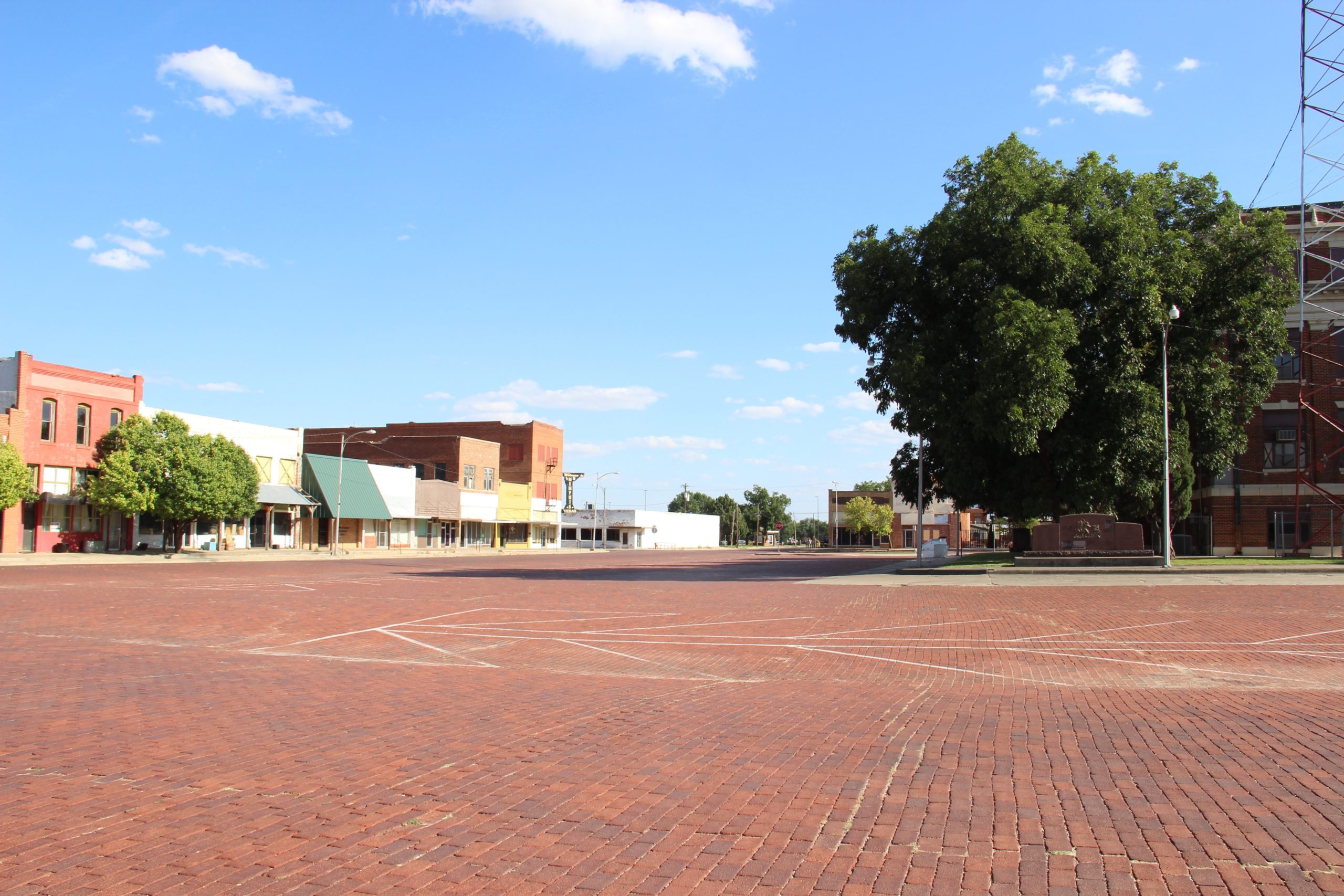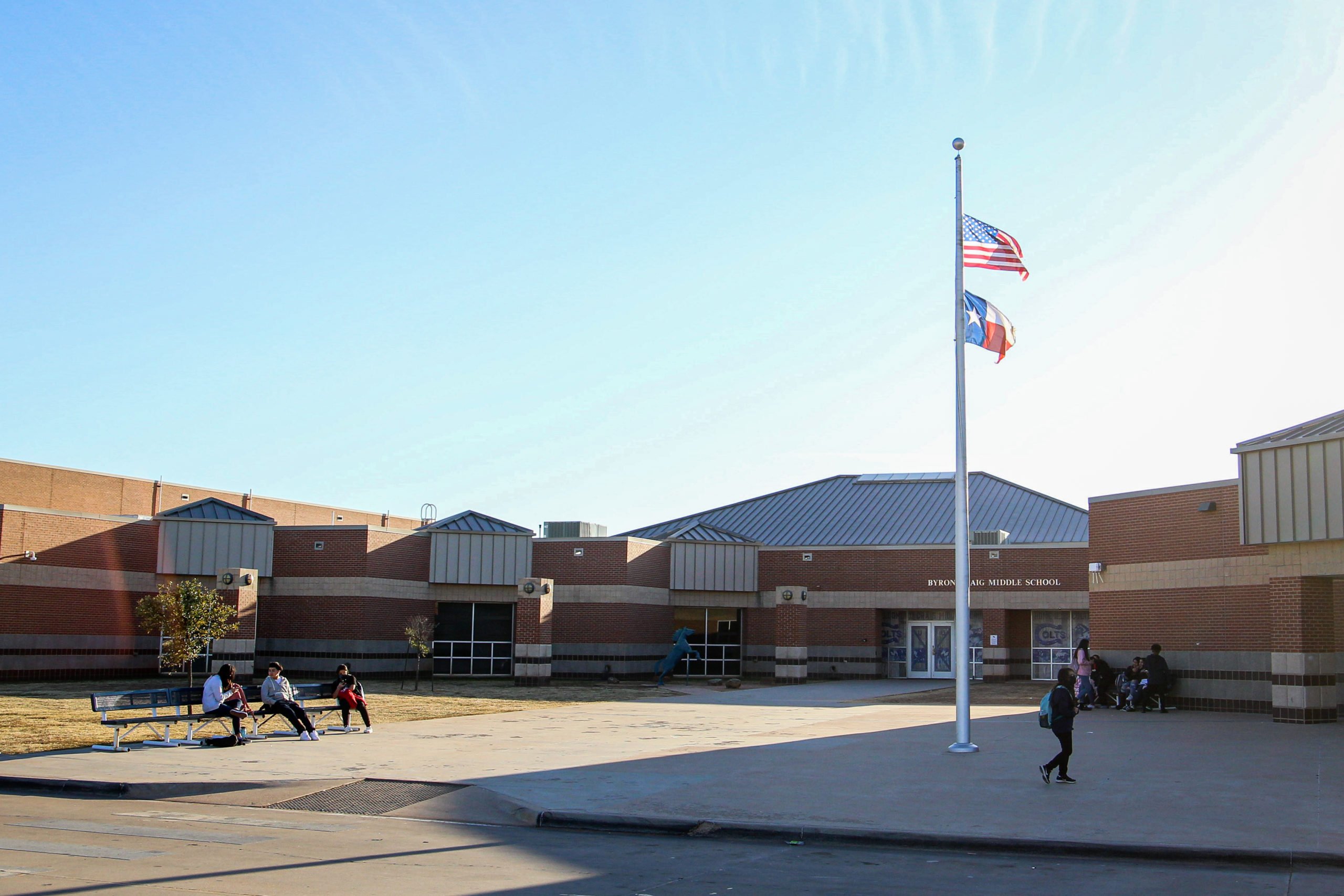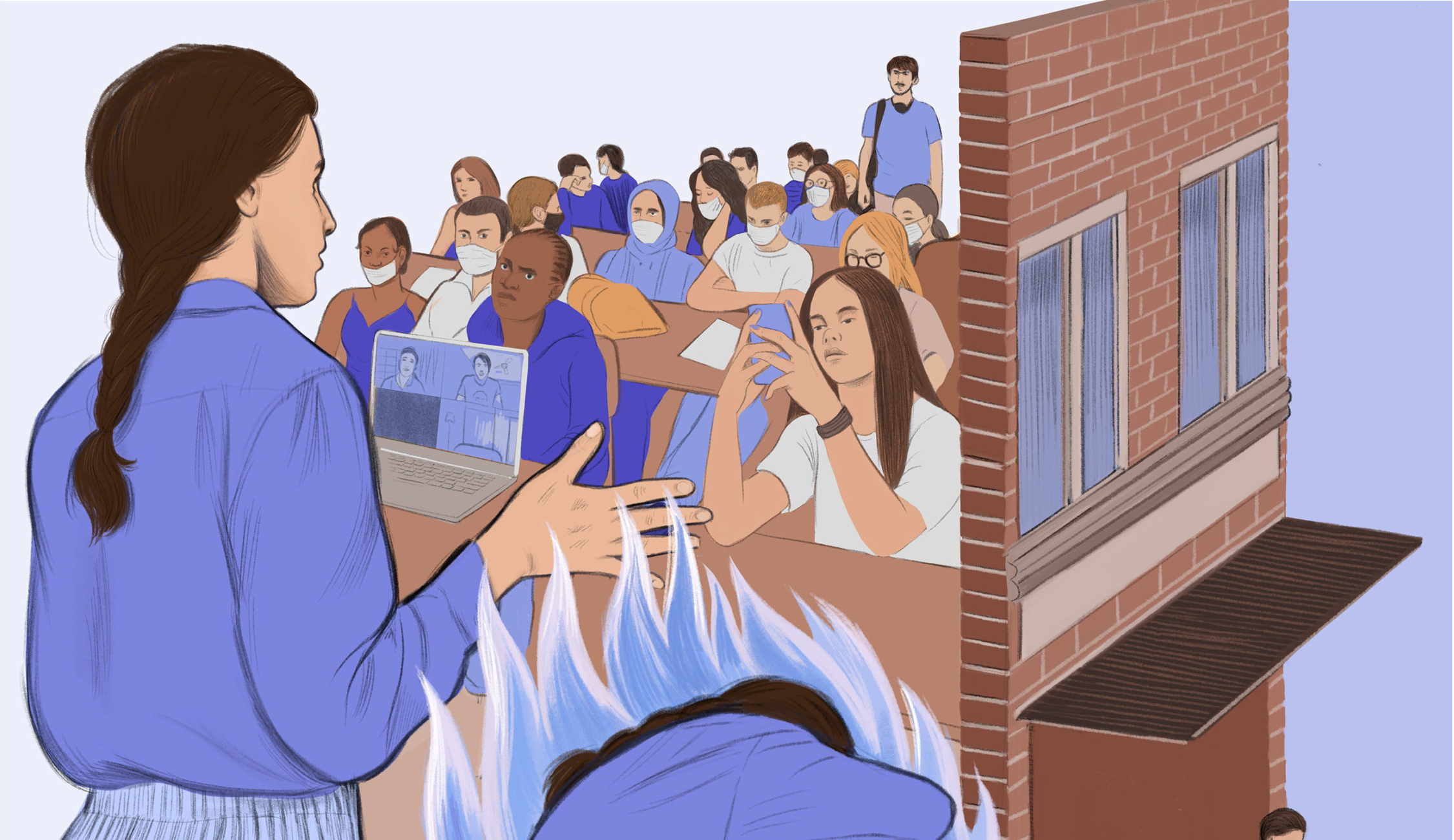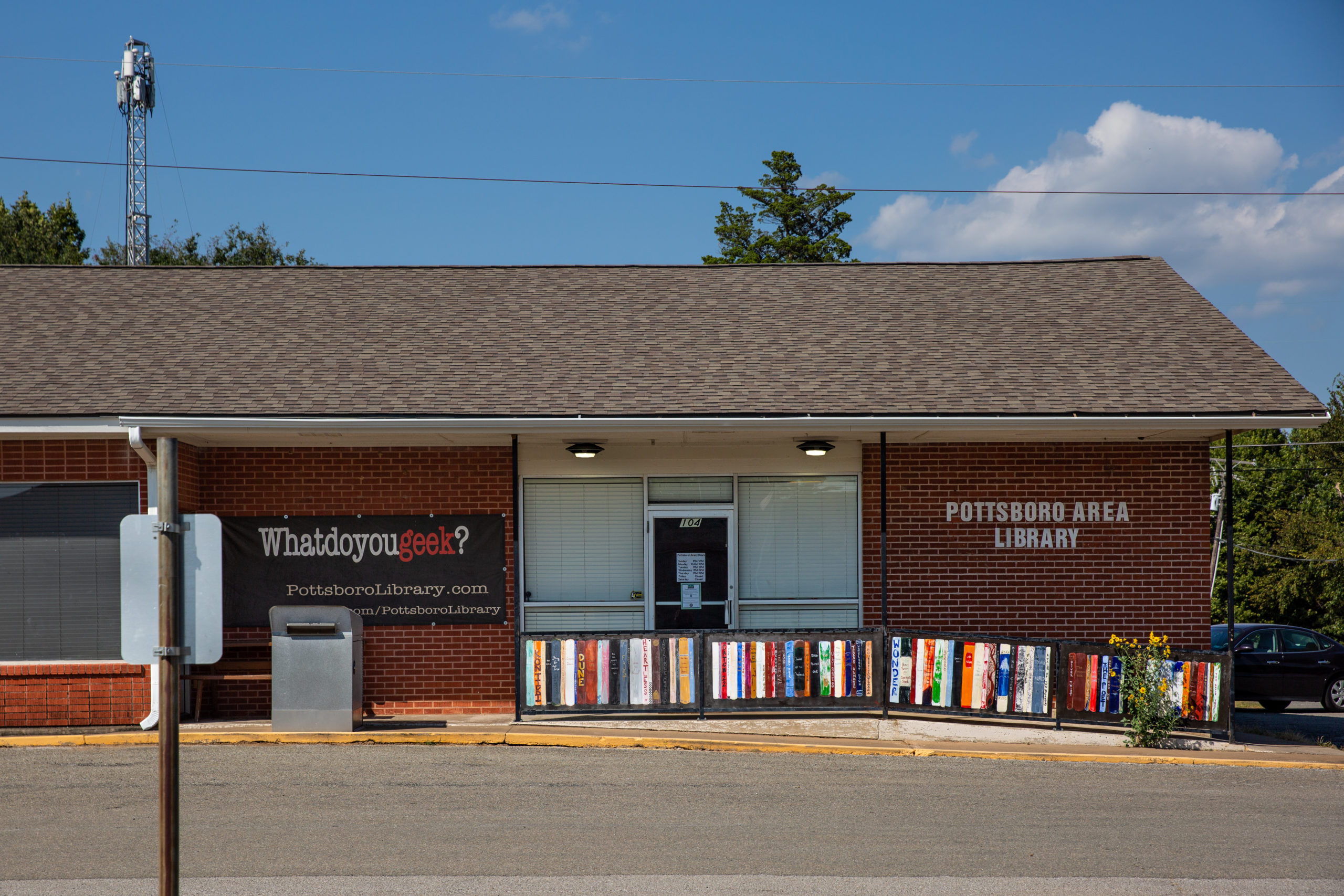
In Rural Texas, COVID-19 Contact Tracing is Largely Up to Local Officials, If It Happens at All
As public health experts warn of new waves of infections this summer or fall, experts say there’s still not a robust system in place to track the coronavirus, particularly in rural areas.

A version of this story ran in the July / August 2020 issue.
Above: In rural Panhandle towns and across the state, contact tracing has largely fallen to county officials.
For the last few weeks, L.D. Williamson has fielded calls from worried neighbors. COVID-19 has spread quickly through Red River County in far Northeast Texas, and residents want to know who has it. Williamson, the county judge tasked with managing the coronavirus response, tells them the same thing: he doesn’t know any more than they do. When the first positive case showed up in Red River in mid-April, Williamson only found out who had tested positive thanks to a Facebook post from the patient’s wife. That was lucky, because the Department of State Health Services (DSHS) wouldn’t tell him. Now Williamson says state officials still won’t reveal who has the virus out of privacy concerns, even as cases balloon in the rural community. As far as he knows, no one is making sure those infected are staying home, or contacting others they’ve been around.
“We can’t do it unless we know who they are, and [DSHS] won’t tell us who they are,” Williamson says. “They are so understaffed and have so many counties to watch over that they’re not able to do it. … So we’re kind of stuck.”
When Governor Greg Abbott announced his plan to reopen Texas businesses this spring, he superseded local control to address the pandemic. But managing the outbreak still falls primarily to local officials under Texas’ decentralized public health system. County judges, as the top elected officials, take on much of the emergency management role. In areas without local health departments, epidemiological investigations are done by DSHS regional offices, which for Northeast Texas is in Tyler, 100 miles south of Red River.
Whether DSHS tells a judge who’s sick appears to vary by regional office, and the extent to which contact tracing—reaching out to those in close contact with infected people to get tested and quarantine—happens depends on available resources in the county. As well, regional health departments cover dozens of counties, leaving many rural local officials to handle contact tracing as DSHS struggles to keep up with growing case numbers. The result is a patchwork of reporting, epidemiological investigations, and contact tracing stymied by communication delays with health officials.
Abbott had set a modest goal of 4,000 contact tracers statewide by June 1. But as the governor announced the third phase of reopening at the beginning of June, the state was still far short, with about 2,900 contact tracers working across Texas. That includes around 1,140 DSHS employees, as well as people working for local health departments, volunteers, university and nonprofit partners, and private employees. The state recently approved a controversial, quickly awarded $295 billion contact tracing deal to a little-known company that has been met with bipartisan criticism. Several months into the pandemic, as public health experts warn of new waves of infections this summer or fall, experts say there’s still not a robust system in place to track the coronavirus, particularly in rural areas.
Local officials say they’ve waited as long as several weeks to hear from the state about positive test results. “By the time you got the tests back you’d need to retest,” Williamson told me in late May. An outbreak was identified in a Red River nursing home, but it’s taken so long to get results back from state testing that “it’s too late to do us any good,” he says. “More could have gotten it, more could have spread it.” A couple days after we spoke, Williamson finally heard back about another round of tests done about two weeks prior: 14 additional cases from the nursing home were added to the county total.
“They are so understaffed and have so many counties to watch over that they’re not able to do it. … So we’re kind of stuck.”
In Sherman County, in the Panhandle, the regional DSHS office provides the names of people who have tested positive but the wait for these results is sometimes longer than the recommended 14-day quarantine period if a person may be sick, says Terri Carter, the county judge. The process varies depending on whether they’re coming from private labs, public labs, or mobile testing units, she says. “There is nothing streamlined or organized about the reporting.”
Employees of the DSHS health departments in these regions referred questions to an agency spokesperson in Austin, who did not respond. DSHS did not answer questions regarding the discrepancy in information provided to county officials, or how many contact tracers are working in each regional office.
Red River and Sherman have some of the highest rates of COVID-19 per capita in the state. While the spread of the virus has slowed for the time being in Sherman, cases are rising quickly in Red River, where Williamson predicted in early May that “sooner or later we’re gonna get more cases.” The county, 30 minutes from the nearest ER since it lost its hospital in 2014, has seen confirmed COVID-19 cases jump from just one to 76 in the last month. Eight people have died.
Without a vaccine or cure for COVID-19, public health experts say rigorous testing and contact tracing is critical to control outbreaks. “Stopping transmission is the only tool we have right now,” says Rebecca Fischer, an infectious disease epidemiologist at the Texas A&M School of Public Health. But calling each positive case and their recent contacts is a laborious process. “Those rural or semi-rural health districts might have one epidemiologist, if they have one at all,” Fischer says. “If you had 10 cases reported in one day, and each of those cases had five contacts, that’s interviewing 10 plus 50 people in a day. And then what happens tomorrow?”
In Northeast Texas and the Panhandle, local officials say state offices have been understaffed and overwhelmed, as COVID-19 cases tied to meat processing plants, nursing homes, and prisons spread quickly in areas not equipped to deal with infectious disease outbreaks.
In Sherman County, on the state’s northern boundary with Oklahoma, contact tracing has largely fallen to the county’s EMS director. “Due to so many cases, [DSHS is] having a hard time keeping up,” says Greg Wright, Sherman’s emergency management coordinator.
Sherman County doesn’t have a local health department, doctor, or hospital. Getting tested for COVID-19 generally requires a 35-minute drive to a neighboring county. The one health clinic in Sherman closed for a period during the pandemic after staff fell ill with the virus, according to county officials.
The county of 1,700 has managed with tracing its 28 confirmed cases so far, local officials say. But it’s situated directly north of Moore County, which has had the highest per capita COVID-19 rate in the state for weeks, with 852 confirmed cases as of June 7, and 14 deaths. The outbreak in Moore is linked to a JBS beef processing plant, where many Sherman residents work. An outbreak in Amarillo has also radiated out to surrounding rural counties in the Panhandle under the regional DSHS health department in Lubbock.

About two hours southeast in Donley County, John Howard has managed to speed up the contact tracing process by virtue of being both a doctor (the only one in the county of about 3,300) as well as the county judge. Like other judges in the area, Howard hears about positive tests administered outside Donley from the regional office in Lubbock, which he says has been “inundated.” But most of Donley’s 27 cases were tested at Howard’s clinic. When he gets a positive test result back, he quickly contacts the patient himself, telling them to quarantine and asking about any recent contacts—eliminating much of the back-and-forth with state officials. “Dr. Howard reports the positive to the state, and the state reports the positive back to Judge Howard,” he says, laughing.
If Howard weren’t a doctor, he’d have to rely more on state officials, but at least he’d still know who to contact. His response when I mention that names are being withheld from some county judges is similar to Carter’s: “How do you know that person is being isolated? How do you do contact tracing?” Howard says. “When there’s a substantial and real imminent threat to others, privacy concern gives way to the need for public health.”
Read more from the Observer:
Why Protesters In Austin Are Chanting ‘Justice for Mike Ramos’: The protests sweeping Texas cities are a stark reminder of the pain caused by police violence.
Why Is APD Responding to Mental Health Crises like Violent Crimes?: The police officer who shot Mike Ramos was involved in the death of neuroscientist Mauris DeSilva in July, which called into question law enforcement’s outsized role in mental health incidents.
If You Can Buy It, By All Means Do That: Five years ago, facing significant rent increases and, in some cases, eviction, residents at the North Lamar Mobile Home Park organized. Now, they own the park.


